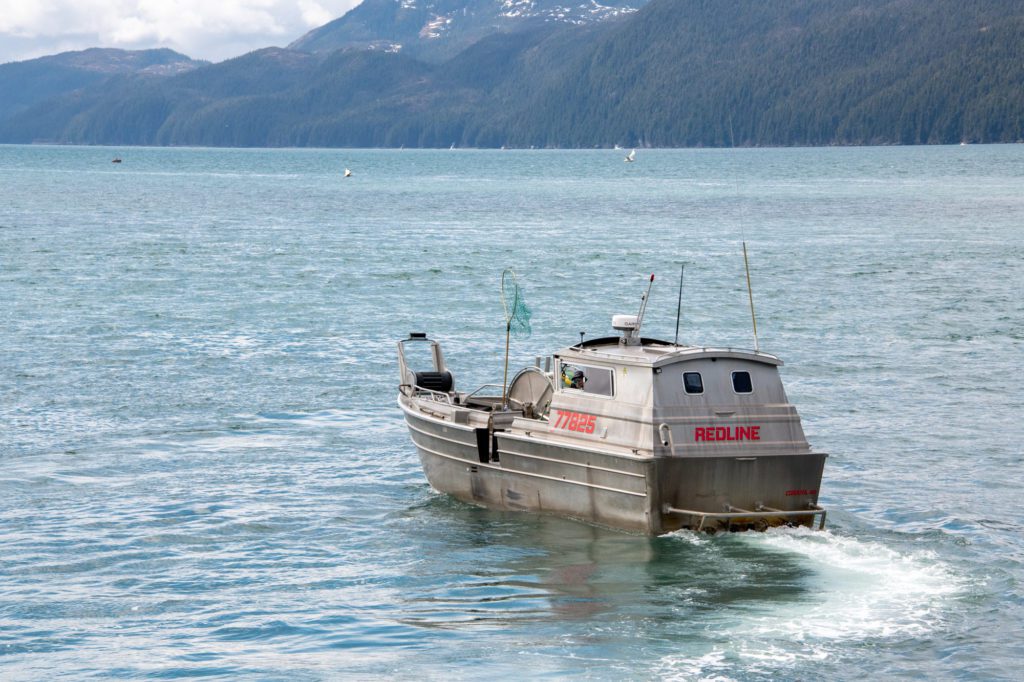
Commercial salmon harvests in Prince William Sound nearly doubled over the past week, with the Alaska Department of Fish and Game’s preliminary catch totals as of Wednesday, July 7, showing a jump to 2.9 million fish, including 800,000 sockeyes.
“Right now, the later component of the sockeye run is stronger than projected,” said Jeremy Botz, gillnet area management biologist in Cordova for ADF&G. “We are continuing to make up ground.” While openers for the Eshamy Main Bay district have been restricted because they have not made cost recovery goals yet, the current rate of harvest now is close to preseason projections, he said.
Preliminary data for the 24-hour opener for the Copper River which began on Monday, July 5, showed a catch of 12,835 fish, including 12,627 sockeyes, 178 pink, 12 Chinooks, nine chums and five cohos. That brought the overall number of salmon delivered to processors in that area to 281,755 fish, including 265,394 sockeyes, 6,854 Chinooks, 8,111 chums, 908 pinks and 488 cohos.
ADFG’s statewide commercial salmon catch total, meanwhile, rose to 27.8 million salmon, including 21.5 million sockeyes, 3.6 million pink, 2.6 million chum, 64,000 Chinook and 7,000 cohos.
The harvest has continued to accelerate over the past three weeks, after lagging behind last year’s pace in early June, said Dan Lesh, who compiles the McKinley Research Group’s in-season salmon harvest reports each week for the Alaska Seafood Marketing Institute.
Even as harvest numbers rise for the Prince William Sound area, harvesters like John Renner, vice president of Cordova District Fishermen United, remain concerned over a situation in which they feel the early run was allocated away from Cordova.
“They have a hard allocative number on a run that fluctuates,” he said.
This year the run was “basically reallocated upriver,” while the commercial fleet ended up having a 16-day closure, he said. “We didn’t fish the inside for the entire season — it finally opened the last opener,” he said. “But the kings were gone a couple of weeks ago.”
During that 16-day closure for the commercial fleet there was only a slight restriction of personal use fishing hours upriver, he said. “The early run was reallocated upriver and Cordova absolutely depends on the Copper River,” he said. “The hard numbers allocating upriver to personal use and sport fishing need to get into a system where everyone shares the conservation burden. One group is doing the lion’s share and that is the commercial fishermen.”
Renner said he doesn’t hold out much hope for changes coming soon from the Alaska Board of Fisheries. “We will try to address it — this is a completely unfair situation,” he said.
The statewide salmon harvest has continued to accelerate over the past three weeks, after initially lagging behind last year’s pace in early June. This year’s statewide year-to-date harvest is about 96% of the year-to-date harvest for 2020, up from 82% a week earlier, according to the McKinley Research Group in-season commercial salmon report compiled by Dan Lesh for the Alaska Seafood Marketing Institute.
“While salmon fishing in general is still slightly behind the year-to-date benchmark, the harvest remains up from last year for sockeye salmon [up 124%] and keta salmon [up 32%],” he said.
Yet while the sockeye harvest has continued to track the five-year average, the keta harvest remains well below it — down 50%. Pink salmon harvests are down 76% compared to 2019, but that was a year with a particularly large early-season run, Lesh noted. The 2021 humpy year-to-date harvest is down less — 56% — compared to the average of the previous three odd-numbered years to date, he said.
Bristol Bay and the Alaska Peninsula continue to lead in their commercial harvests.
In Bristol Bay, more than 18 million salmon, mostly sockeyes, have been delivered to processors, led by the Nushagak district, where the catch was heading toward nearly 12 million reds. The Nushagak has had, so far, two single-day record harvests. By Wednesday, July 7, the ADF&G preliminary harvest report showed total deliveries of 3.9 million sockeyes from the Egegik district, 2.4 million from the Naknek-Kvichak, 666,000 from the Ugashik and 34,000 from Togiak.
In the Westward region, with deliveries exceeding 8.9 million salmon, the catch in the Alaska Peninsula was estimated at more than 8 million salmon, including over 7 million salmon from the South Peninsula. Kodiak harvesters meanwhile had a catch of 794,000 fish, including some 688,000 sockeyes, 66,000 pink and 40,000 chum salmon.
There have been no commercial openers in the Arctic-Yukon-Kuskokwin region.





